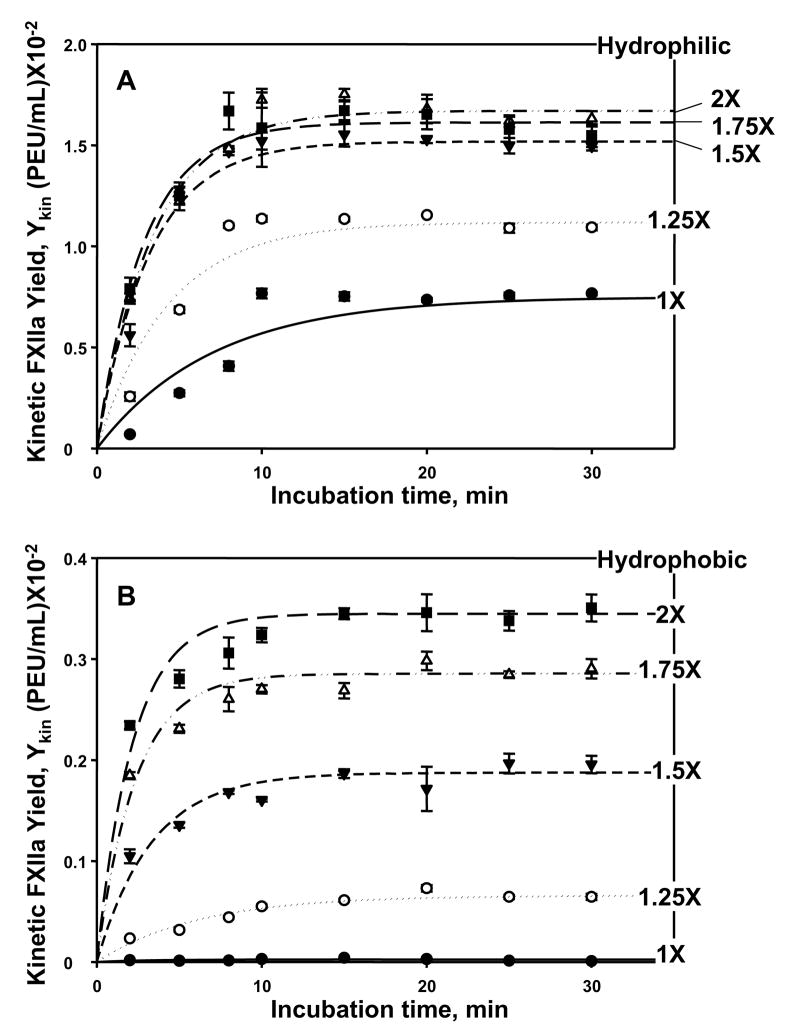Figure 1.
FXII activation kinetics in citrated human platelet-poor plasma. Panel A, hydrophilic (fully water-wettable glass) procoagulant particles; Panel B, hydrophobic (poorly water wettable, silanized) procoagulant particles (each at 150 mm2 nominal surface area). Apparent FXIIa yield Ykin is expressed in plasma-equivalent-units-per-milliliter (PEU/mL) at varying contact (incubation) time with procoagulants, where error bars estimate uncertainty in Ykin arising from FXIIa-titration calibration curves (see Methods and Materials). Annotations express concentration of exogenous FXII spikes expressed in multiples-of-nominal physiologic concentration (taken to be 30 μg/mL; 1X means endogenous FXII, no exogenous spike; 1.25X means 25% exogenous spike prepared by addition of 7.5 μg/mL exogenous FXII, etc.; see column 1 of Table 1; filled circles = 1X, open circles = 2X, filled inverse triangles = 1.5X; open triangles = 1.75X, filled squares = 2X). Lines through the neat-buffer and protein-cocktail data represent the best fit to the mathematical model of FXII activation discussed in the text and derived in Appendix I. Note that FXIIa production rate asymptotically reaches a steady-state yield YSS at long incubation time that depends on initial FXII concentration.

